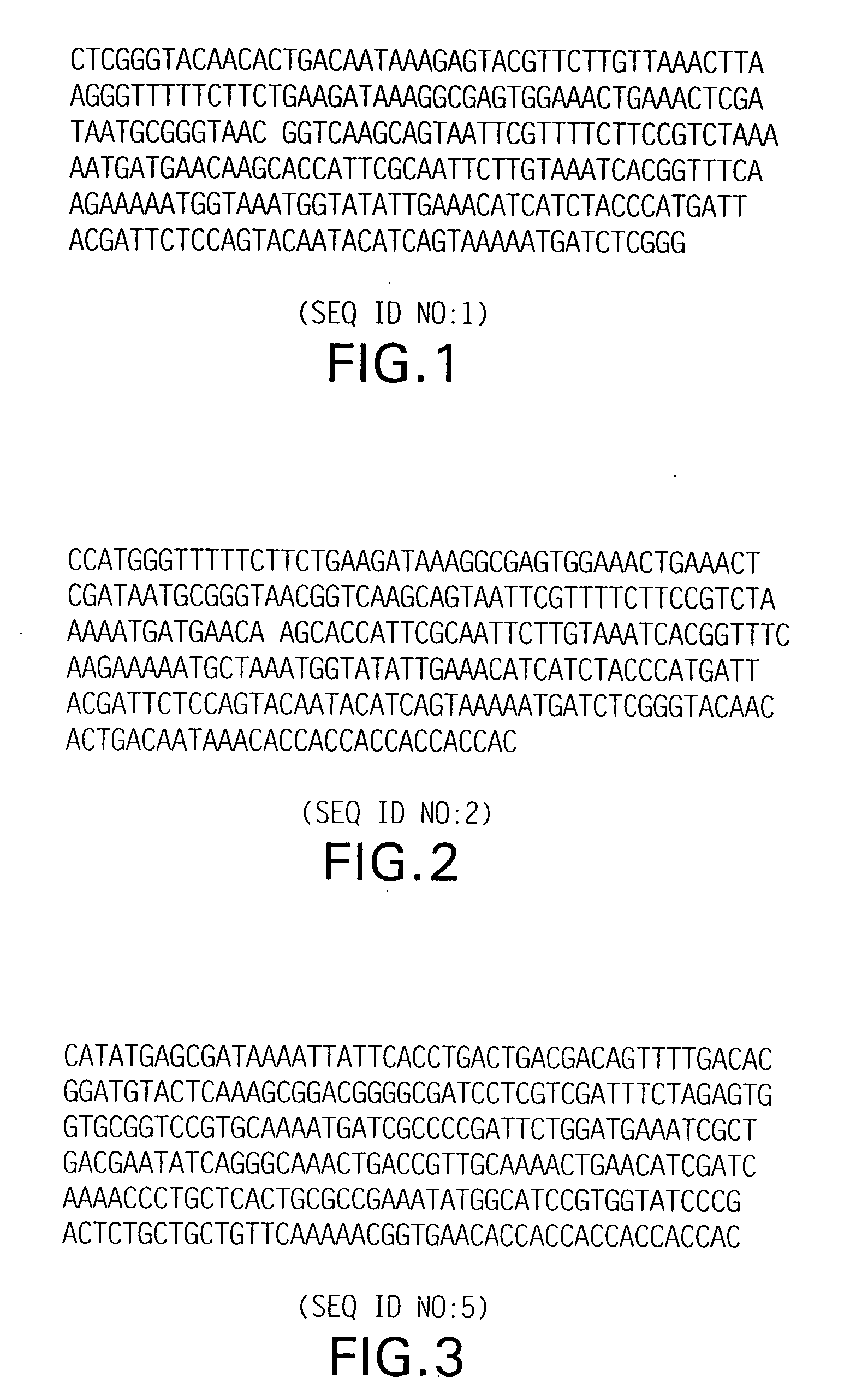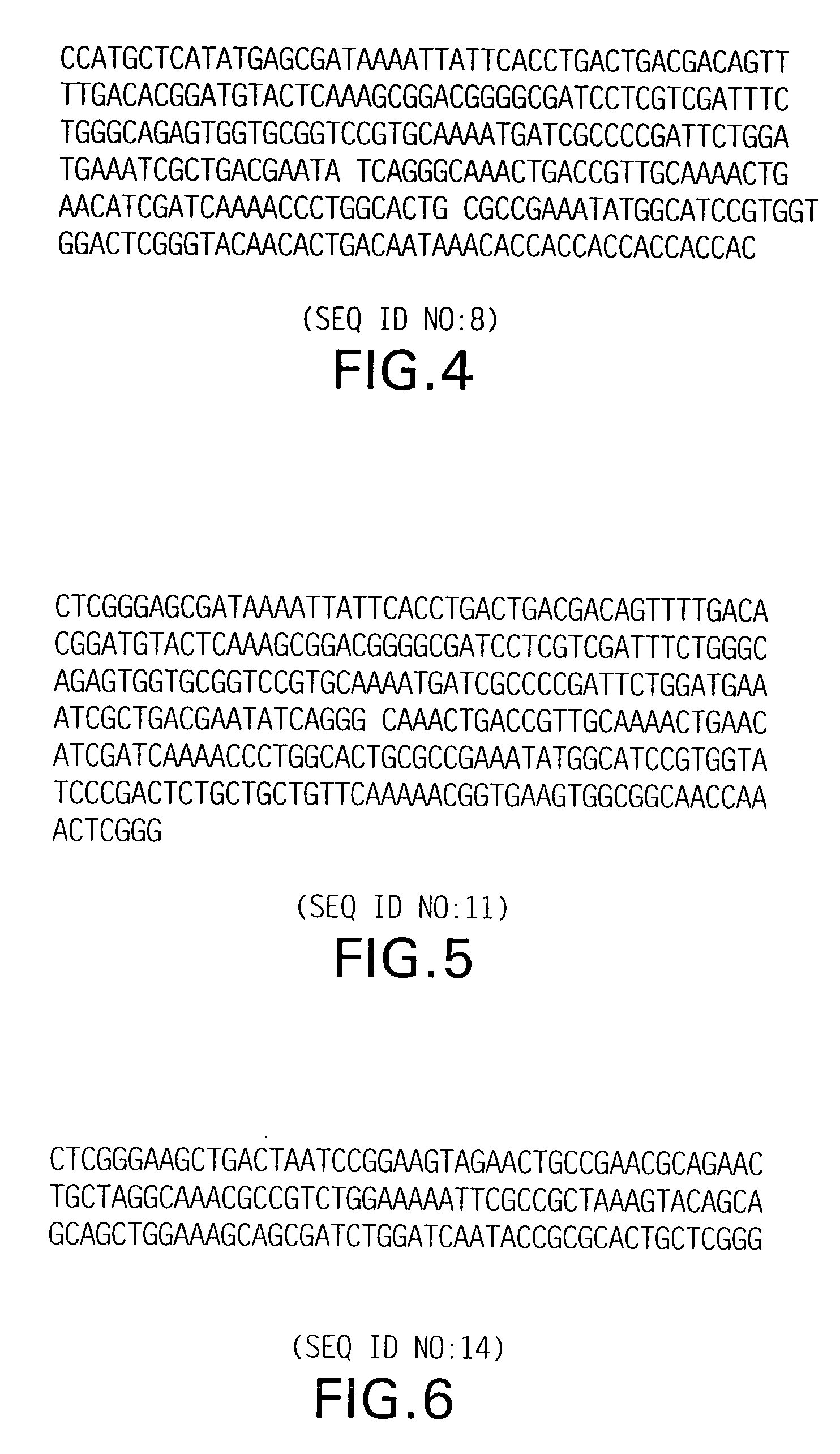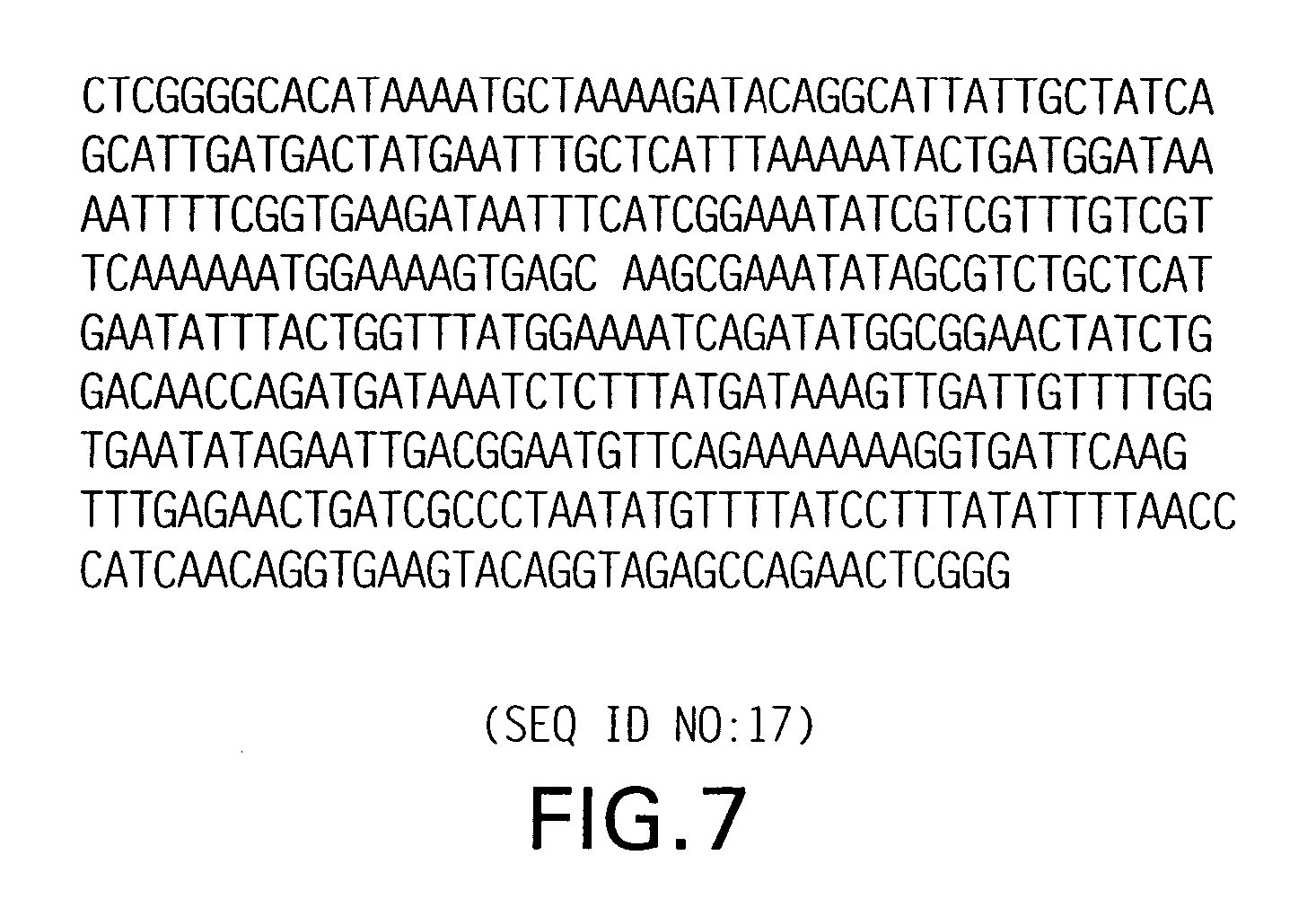Methods for production of proteins
a protein and protein technology, applied in the field of protein engineering, can solve the problems of inability to predict whether or not a recombinant polypeptide will form inclusion bodies, inefficient translation of mrna, and limitations of heterologous protein expression in host cells, and achieve the effect of facilitating rapid isolation and purification
- Summary
- Abstract
- Description
- Claims
- Application Information
AI Technical Summary
Benefits of technology
Problems solved by technology
Method used
Image
Examples
example 1
Cloning and Expression of a 10 kD Protein
[0095] The initial objective was to make a protein molecular weight standard ranging from 10 kD-250 kD with 10 kD increments. Therefore, a modified portion of T4 gene 32 protein containing 87 amino acids (261 bp) that includes 6 histidine residues at the carboxy end (FIG. 1; SEQ ID NO:1) (see U.S. Pat. No. 5,449,758) was used. The fragment was cloned and expressed to produce a 10 kD protein. The clone was designated as plasmid pTrcprl-monomer. This construct contains an unique AvaI site (CTCGGG) to generate multimers of any given AvaI fragment with CTCGGG sequence. When digested with AvaI, the clone generates a TCGG overhang. Thus, when a DNA fragment having a TCGG overhang at both ends is ligated with AvaI-digested pTrcprl-monomer, the fragment will be ligated only in one direction (head-to-tail). Using proper ligation condition, it was possible to generate multimers of a desired fragment. For example, if a single AvaI fragment (264 bp) is ...
example 2
Cloning of Fusion Proteins Larger than 10 kD
[0098] In order to make fusion protein with truncated thioredoxin, a vector containing a unique AvaI site, used to make concatamers, was developed; this vector was designated pTrxA-concat (FIG. 4; SEQ ID NO:8). Using this vector, a series of fusion proteins has been made linking the vector to single or multiple fragments of thioredoxin (FIG. 5; SEQ ID NO:11) (thioredoxin-thioredoxin fusion), E. coli DEAD-box protein (FIG. 6; SEQ ID NO:14), KpnI methylase (FIG. 7; SEQ ID NO:17), or 264-bp modified T4 gene 32 protein (FIG. 1; SEQ ID NO:1) (See U.S. Pat. No. 5,449,758).
[0099] Specifically, fusion proteins of the indicated molecular weights were made by ligating pTrxA-concat to one or more copies of the nucleic acid molecules encoding 10 kD fragments of truncated E. coli thioredoxin (ΔtrxA) or T4 gene 32 protein, or 5 kD fragments of E. coli Dead-Box protein or KpnI methylase, as shown in Table 1. In all cases, the fusion protein was express...
example 3
Production of Unstained Protein Molecular Weight Ladders
[0100] To demonstrate its utility, the present system was used to make unstained protein molecular weight ladders. Purified proteins of differing sizes, made as described in Example 2, were mixed and separated by SDS-PAGE, and the banding patterns in various acrylamide concentrations was observed.
[0101] The results of these experiments showed the combination of proteins allowing the best resolution over a range of acrylamide concentrations to be a mixture of 10 kD, 15 kD, 20 kD, 25 kD, 30 kD, 40 kD, 50 kD, 60 kD, 70 kD, 80 kD, 90 kD, 100 kD, 120 kD, 160 kD and 220 kD proteins. These results demonstrate that the methods of the present invention are useful in making proteins of various size ranges, and may be used to produce compositions comprising protein molecular weight ladders.
PUM
| Property | Measurement | Unit |
|---|---|---|
| concentration | aaaaa | aaaaa |
| concentration | aaaaa | aaaaa |
| concentration | aaaaa | aaaaa |
Abstract
Description
Claims
Application Information
 Login to View More
Login to View More - R&D
- Intellectual Property
- Life Sciences
- Materials
- Tech Scout
- Unparalleled Data Quality
- Higher Quality Content
- 60% Fewer Hallucinations
Browse by: Latest US Patents, China's latest patents, Technical Efficacy Thesaurus, Application Domain, Technology Topic, Popular Technical Reports.
© 2025 PatSnap. All rights reserved.Legal|Privacy policy|Modern Slavery Act Transparency Statement|Sitemap|About US| Contact US: help@patsnap.com



